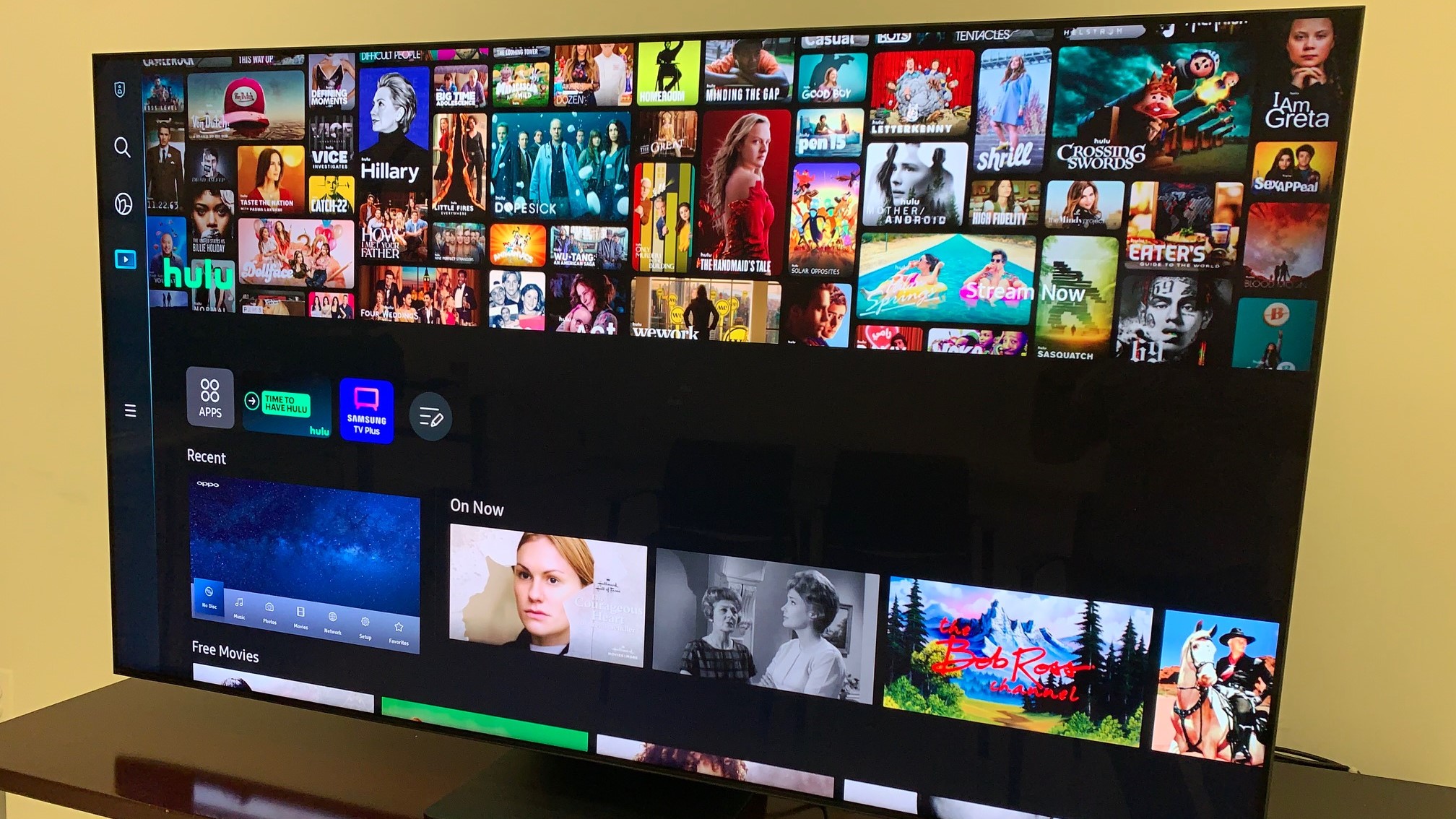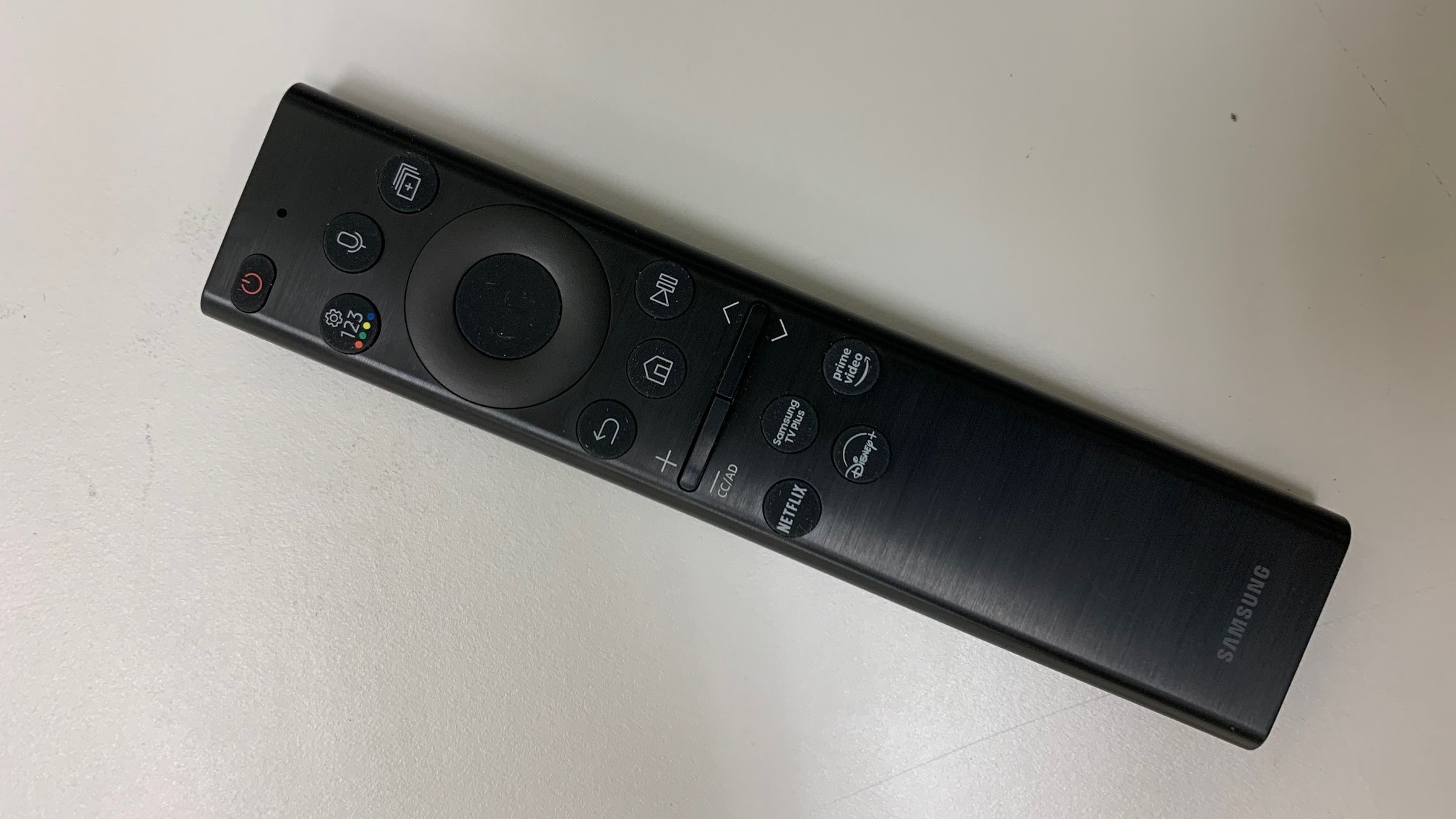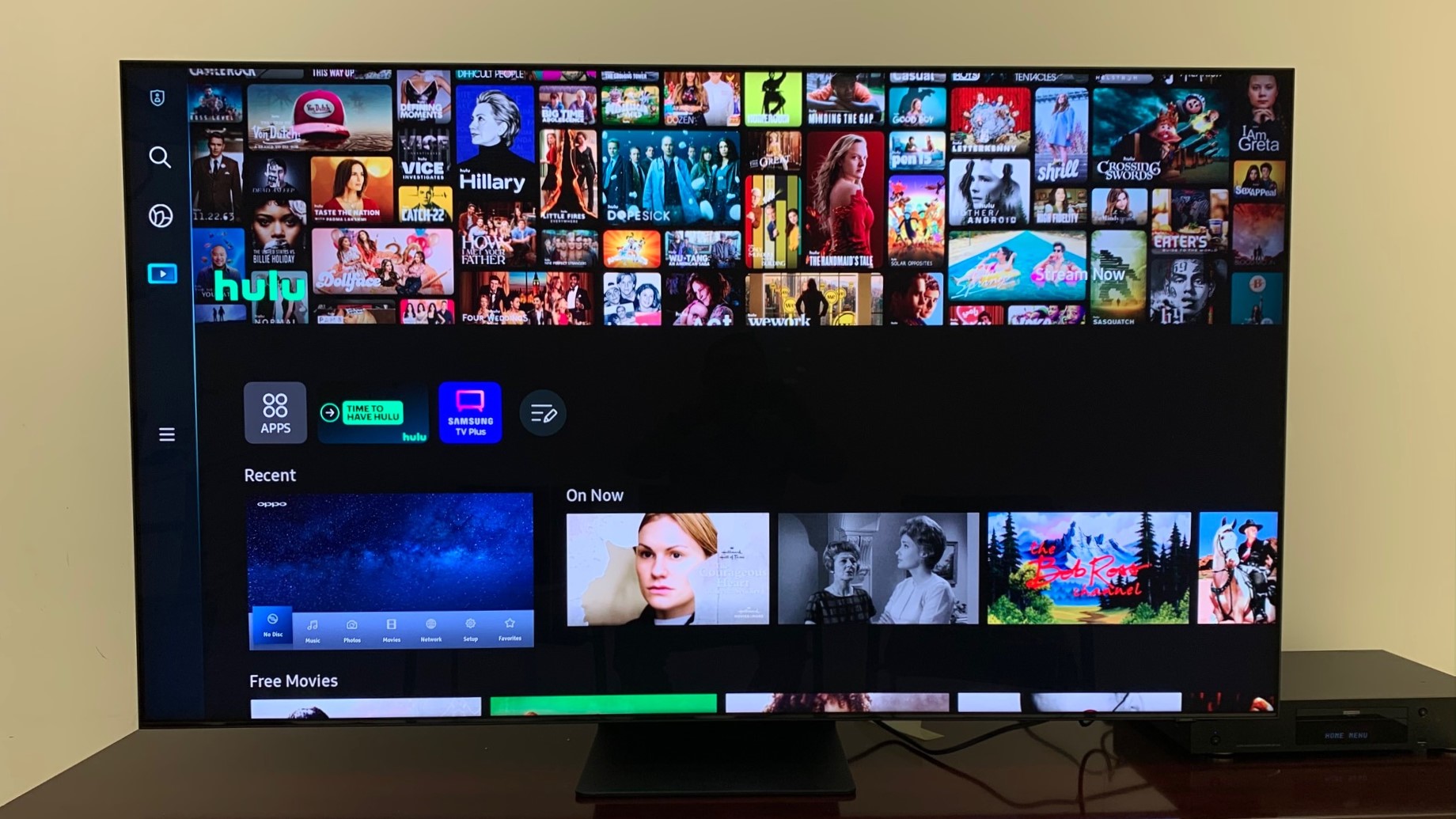Early Verdict
Samsung’s next-to-flagship QN90B Neo QLED 4K TV delivers ample HDR brightness, along with deep and detailed blacks courtesy of a Mini-LED backlight with the company’s new Shape Adaptive Light Control System. A few aspects of its performance left us scratching our heads during our relatively brief hands-on test, but the QN90B for the most part met expectations for a high-end, and correspondingly high-priced, TV.
Pros
- +
Effective local dimming
- +
Rich color reproduction
- +
Wide viewing angle
Cons
- -
Some noise and elevated black levels with dark movies
- -
Overly basic remote control
- -
Pricey
Why you can trust TechRadar
Samsung's QN90B Neo QLED TV series is the second-tier 4K option in the company's QLED lineup, slotting in-between the flagship QN95B and QN85B series sets. And while we wouldn’t call the QN90B series budget-friendly, it’s priced significantly lower than the QN95B sets while delivering many of the same features and tech innovations the company has introduced for 2022.
Chief among these is something Samsung calls Shape Adaptive Light Control System – basically, a fancy name for processing that modulates the intensity of specific local dimming zones in the set’s mini-LED backlight to minimize “blooming” artifacts. And while the QN90B series must contend with merely having a Neo Quantum Processor 4K with “deep learning” rather than the “neural networks” found in the flagship, it does have Samsung’s new Real Depth Enhancer, a feature designed to provide an enhanced sense of 3D-like visual space.
More important from a practical standpoint, QN90B series sets feature an Anti-Glare screen with Ultra Viewing Angle. While the screen’s reflection-reducing tech doesn’t exactly match what you’ll get with the company’s new The Frame TVs, it works very effectively to reduce glare in rooms with overhead lighting. Ultra Viewing Angle also succeeds in widening the viewing “sweet spot” to accommodate viewers at off-center seats.
We performed our hands on test of a 65-inch QN90B during a full-day visit to Samsung’s Northern New Jersey facility where we were left in isolation to put the TV through the ringer. Along with performing a full suite of video measurements, we were able to spend ample time viewing reference Ultra HD Blu-ray discs using an Oppo UDP-103 player.
Price and availability
The 65-inch QN90B we tested is part of Samsung’s 2022 TV lineup. This series is offered in a wider range of sizes than the company’s other Neo QLED models, with screens ranging from 43 inches up to a gargantuan 98 inches (the 98-inch model only available in the U.S. at present). Not surprisingly, the price of the largest QN90B is $10,000 higher than its 85-inch sibling – a variance that suggests buying a projector/screen combo to achieve that image size would be a much better choice from a value perspective.
Current prices for Samsung’s QN90B TVs are listed below. All models are available now.
- The 43-inch QN90B is $1,199 / £1,399 / AU$1,795
- The 50-inch QN90B is $1,599 / £1,499 / AU$2,295
- The 55-inch QN90B is $1,899 / £1,999 / AU$2,695
- The 65-inch QN90B is $2,599 / £2,799 / AU$3,595
- The 75-inch QN90B is $3,499 / £3,699 / AU$4,795
- The 85-inch QN90B is $4,999 / £5,499 / AU$6,495
- The 98-inch QN90B is $14,999

Design and features
While QN90B series TVs lack the “Infinity Screen” design of the step-up QN95 models, the black bezel surrounding the display is thin enough to all but disappear during viewing. Samsung calls the QN90B’s design NeoSlim, and the set’s slender, slightly curved back panel supports that label. An included iMac-like bending plate table stand provides firm support while allowing enough clearance to slot an average slim-format soundbar beneath the screen.
Sign up for breaking news, reviews, opinion, top tech deals, and more.
Another way the QN90B series differs from Samsung’s QN95 models is the presence of onboard video connections instead of an external One Connect box for A/V hookups. All four HDMI ports handle up to 4K/144Hz high frame rate video, and other advanced features such ALLM (Auto Low Latency Mode), HDMI eARC (Enhanced Audio Return channel), quick switching, and Freesync Premium Pro are supported. For those wanting to take advantage of free over-the-air broadcasts, the set has an onboard ATSC 3.0 digital TV tuner.
As you’d expect from a Samsung TV with a “QLED” label, the LCD panel used by the QN90B series features a quantum dot layer for expanded color. Measurements we made on-site confirmed 99.9% coverage of the Rec. 709 (HDTV) color gamut in Dynamic mode and 92% in Filmmaker mode. DCI-P3 (the gamut used for digital cinema and Ultra Blu-ray disc releases) coverage in Filmmaker mode clocked in at a somewhat disappointing 91.5%. [Update 6/9/22: Samsung has questioned the accuracy of the color gamut measurements made by Future's testing department during our on-site test. Those measurements are in the process of being re-done, and this report will be updated after we receive the updated data.-AG] Given the time constraints of our test, we didn’t get an opportunity to count the local dimming zones used by the set’s Mini-LED backlight, but as you’ll read in the Performance section, the amount is sufficient to deliver mostly seamless black-to-white transitions in images.

As stated above, the QN90B series features Samsung’s Neo Quantum processor 4K. It supports the HDR10, HLG and HDR10+ high dynamic range formats, along with HGiG (HDR Gaming Interest Group), but, as with past Samsung sets, Dolby Vision HDR has been left out in the cold.
Samsung’s Tizen smart TV interface tends to get hammered on (see our full review of the QN95B), but to me the QN90B’s home screen didn’t seem all that much more congested than what you’ll find on its competition. What really bugged me about it was the need to create a Samsung account to download any apps – something most other TVs don’t make you do.
A big push for Samsung on its 2022 sets is the Samsung TV Plus app, which curates an extensive list of free content to stream. While I can’t argue with free, I did find the control button that takes you directly to TV Plus-world to be irritatingly placed directly below the Home button on Samsung’s otherwise sparse remote control. While reviewing the QN90B, I regularly found myself pressing the TV Plus button instead of the Home one. This would usually cause a ‘90s rap or grunge music video to appear on screen, and I had to scramble to remove it.
Performance
Starting out viewing test patterns via a 4K signal generator and the Spears & Munsil UHD HDR Benchmark disc, a full-screen 100% white pattern and a lower-level gray one both showed a slight amount of color tinting and non-uniform brightness, though I can’t say I noted the same issue when watching regular programs. Better news: the QN90B was able to retain brightness and color vibrancy at viewing positions up to 45 degrees off from center, proving the effectiveness of the Ultra Viewing Angle feature. I was also impressed by how good pictures looked with overhead lights on – that anti-glare screen in action – though I did most of my evaluation with room lights switched off.
While we conducted measurements with the TV in Filmmaker (and Dynamic) mode, the Movie mode turned out to be a better place to kick off adjustments. Colors in Filmmaker mode were mostly accurate, but there was a high level of black “crush” that obscured detail in shadows. This was less of an issue in Movie mode, which yielded similarly accurate color, though I still had to boost the set’s Gamma setting from the BT.1886 default and boost the Shadow Detail setting to dredge any out any details from the shadowy gloom.
The QN90B’s maximum picture brightness measured on a 10% white window in Dynamic mode was in the 2,000 nits range – way more than enough to deliver the goods with most HDR content. Other measurements showed input lag with a 4K test signal generator to be an excellent 9.8ms (milliseconds) and 12ms with a 1080p source, both in Game mode.
Switching back to the QN90B’s more eyeball-friendly Movie picture mode, I watched a few segments from the 2021 James Bond film No Time to Die. This disc looked almost breathtakingly good on the Samsung, with sun-drenched scenes shot in Italy revealing a wide range of highlight detail and subtle colors. The set also excelled on the darker scenes that take place in Havana, Cuba, with shadows receding into true black but with plentiful shadow detail visible.
Color-drenched, CGI-heavy films like Guardians of the Galaxy Vol. 2 also popped in a pleasing way on the Samsung’s screen. The sequence that takes place on Ego’s planet, for instance, showed a vivid range of greens and reds, and in other scenes Yondu’s skin came across as a deep, satisfying blue. I did see a slight degree of backlight-related blooming in the movie’s black letterbox bars; this led me to check for it further on a few torture-test clips from the Spears & Munsil disc, where I did notice blooming in a few instances. For the most part, however, I wasn’t bothered by its (very) occasional intrusion during my QN90B viewing session.
Encouraged by what I saw in the Havana sequences from No Time to Die, I next watched Dune and was…disappointed. Black bars in the film’s darker scenes remained a solid black, but the image lacked the overall visual punch I expect from a 4K/HDR presentation, even a relatively dark one like Dune. Switching the TV’s local dimming preset from High to Medium helped a bit here, but not by much. More bothersome was a relatively high degree of noise, even after I switched to Filmmaker, a picture mode that shuts off most types of image processing.
To check myself, I spun another dark-looking 4K/HDR movie, The Batman. Deep blacks also came across well on this disc, but there was much of the same flat and noisy quality, with elevated shadows, that I had witnessed with Dune. Interestingly, both movies were shot digitally (by the same cinematographer, Greig Fraser), transferred to film, and then transferred back to digital to achieve a unique look. Was this post-production sorcery the root of the problem? If I had more time to dig in with the QN90B and compare it to a different TV, I likely would have come to a more satisfying conclusion, but for now I’ll just say that both Dune and The Batman didn’t look all that great on the Samsung.
Audio quality
With most of my time spent with the QN90B dedicated to video, I didn’t get a chance to mess around much with its audio features. Even so, I had the volume pushed up relatively high and didn’t notice clipped dialogue or undue strain from loud movie sound effects. The set sports a number of Samsung-specific audio features such as Object Tracking Sound, Q-Symphony (allows the built-in 2-channel, 40-watt audio system to work in tandem with one of the company’s soundbars), and Active Voice Amplifier. And along with its HDMI eARC connection, it has a Bluetooth audio output for a wireless link to a soundbar or headphones.
Early verdict
At $2,599 (and £2,799 / AU$3,595) Samsung’s 65-inch QN90B is hardly a casual purchase, and it faces plenty of competition from OLED sets and other Mini-LED-backlit LCD ones. But at $800 less than the company’s same-size QN95B model, the QN90B strikes us as a relatively good deal in the rarified realm of high-end Samsung TVs.
While our hands-on test of the QN90B was more hit-and-run than we would have preferred, we ended up walking away mostly impressed. Its picture is bright, its colors vivid, and the local dimming performance of the Mini-LED backlight is much what you’d expect from a high-end TV. The QN90B did struggle somewhat with darker movies, and that’s something we’ll look forward to investigating in a future full review of Samsung’s next-to-flagship Neo QLED 4K TV offering.
- Looking for something different? Check out our guide to the best TVs available now

Al Griffin has been writing about and reviewing A/V tech since the days LaserDiscs roamed the earth, and was previously the editor of Sound & Vision magazine.
When not reviewing the latest and greatest gear or watching movies at home, he can usually be found out and about on a bike.
What is a hands on review?
Hands on reviews' are a journalist's first impressions of a piece of kit based on spending some time with it. It may be just a few moments, or a few hours. The important thing is we have been able to play with it ourselves and can give you some sense of what it's like to use, even if it's only an embryonic view. For more information, see TechRadar's Reviews Guarantee.
